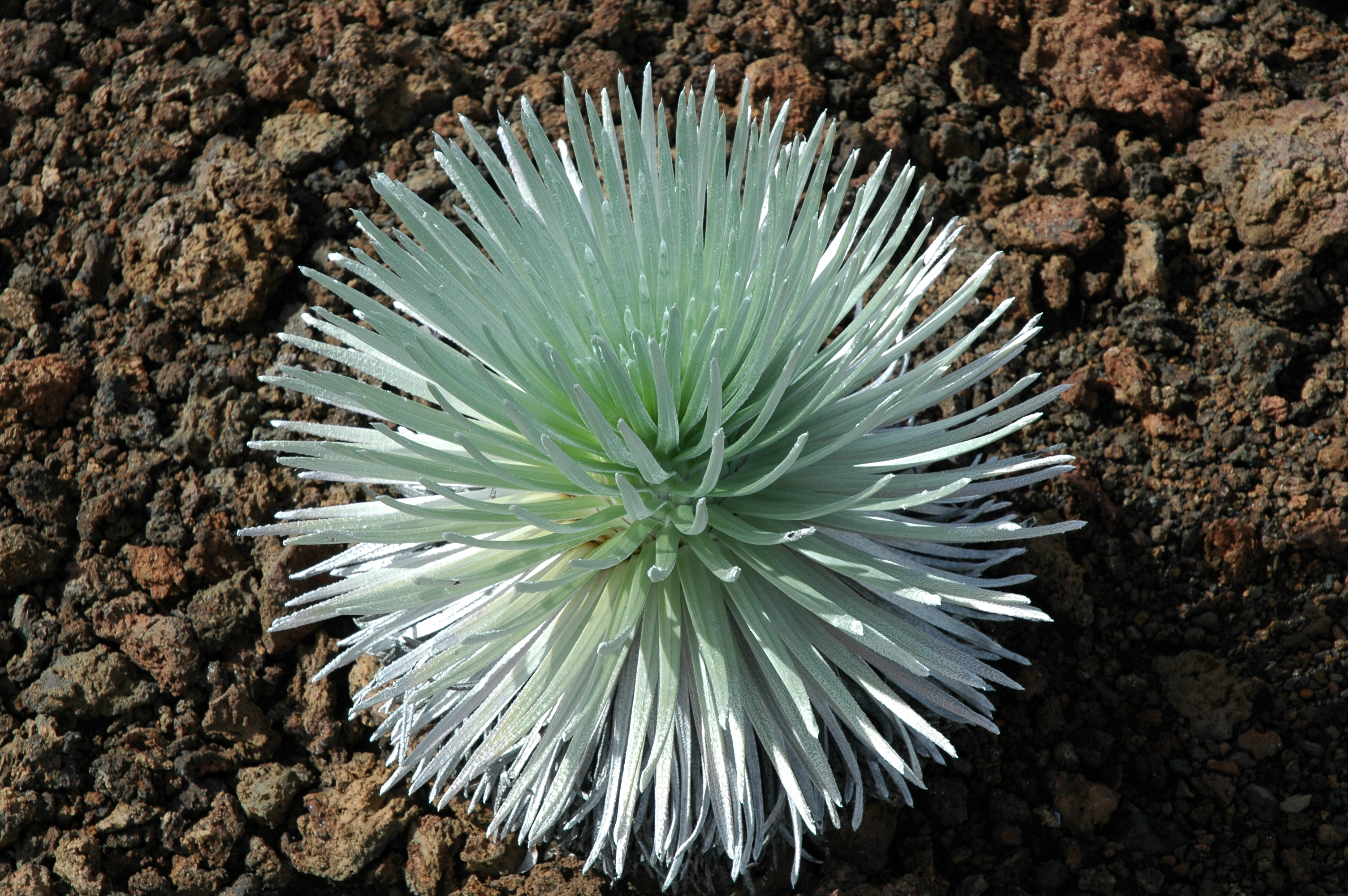- Haleakala Silversword
Taxobox | name = Haleakalā silversword

image_width = 240px
image_caption = Haleakalā silversword
status = VU | status_system = IUCN3.1
regnum =Plant ae
divisio = Magnoliophyta
classis =Magnoliopsida
ordo =Asterales
familia =Asteraceae
genus = "Argyroxiphium "
species = "A. sandwicense "
subspecies = "A. s. macrocephalum"
trinomial = "Argyroxiphium sandwicense macrocephalum"The Haleakalā silversword ("Argyroxiphium sandwicense macrocephalum") is part of the family
Asteraceae . Thesilversword in general is referred to as "okinaāhinahina" in Hawaiian (literally, "very gray"), and it has been a threatened species according to the U.S. Fish & Wildlife service sinceMay 15 ,1922 . Excessive grazing by cattle and goats and vandalism inflicted by people in the 1920s caused near extinction of the Haleakalā silversword. The plant has been strictly monitored and protected by the government since and is considered a successful conservation story, although threat to the species remain. This plant is only found on the island of Maui in Haleakalā National Park at an elevation of 2,100 to 3,000 m on the Haleakalā summit depression, the rim summits, and surrounding slopes of the dormantHaleakalā volcano . Silversword plants in general grow on volcanic cinder, a dry, rocky substrate that is subject to freezing temperatures and high winds. The skin and hairs are strong enough to resist the wind and freezing temperature of this altitude and protect the plant from dehydration and the sun.Before the
National Park Service was granted control of Haleakalā volcano, visitors to the volcano's summit often participated in the common practice of uprooting a silversword plant and then rolling it on the jagged lava rock terrain, drying the flowers for arrangements, or using the plant as kindling. Because the delicate, shallow root structure can be crushed by walking in the rocks around the plant, they are very sensitive to foreign elements. Feeding by goats also severely damaged many plants and prevented reproduction.Ungulates are now fenced out of the crater area and the species is legally protected from damage by humans.Haleakalā silversword has numerous sword-like
succulent leaves covered with silver hairs. The plant's base of leaves arranged in a spherical formation at ground level of the plant dominate for the majority of the plant's life which may be greater than fifty years. The leaves are arranged so that they and the hairs of the leaves can raise the temperature of the shoot tip leaves up to 20 °C to adapt to the extreme temperatures by focusing the sunlight to converge at this point and warm the plant. Atsenescence which often occurs when the plant reaches a diameter of approximately one-half meter, the plant produces a tall stalk of maroon ray flowers which resemble the sunflower in just a few weeks. Flowering usually occurs in June or July. This flowering stalk may have up to 600 heads of up to 40 outlying ray flowers and 600 disk flowers and is pollinated by flying insects like "Hylaeus (Nesoprosopis ) volcanica". The flower stalk can reach up to two meters in height and has numerous tiny sticky hairs to prevent crawling insects from damaging the plant. Seeding of the plant is very sensitive because damage to the flowers or stalk by insects before reseeding further hinders the threatened species’ propagation. The leaves become limp and dry as themonocarpic plant goes to seed and dies.References
* [http://www.kaahelehawaii.com/pages/nathist_endangered_species.htm Ka’ahele Hawai’i Native Plants]
* [http://biology.usgs.gov/s+t/noframe/t172.htm Haleakalā Silversword]
* [http://ecos.fws.gov/docs/recovery_plans/1997/970729.pdf Federal recovery plan]
* [http://www.botany.hawaii.edu/faculty/carr/asm.htm Hawaiian Silversword Alliance, UH Botany]
Wikimedia Foundation. 2010.
